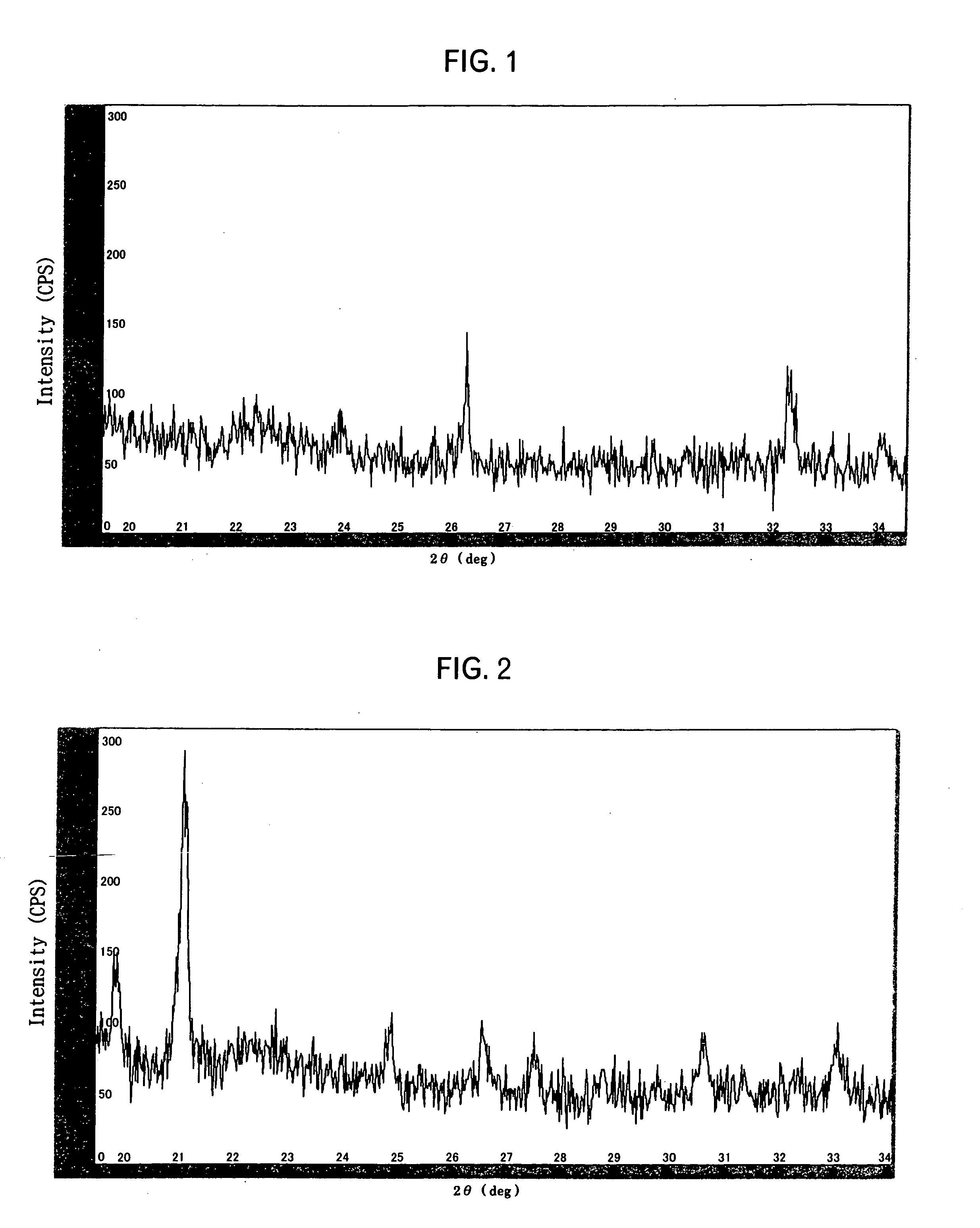Positive electrode material for lithium secondary cell and process for producing the same
a lithium secondary battery and positive electrode technology, applied in the direction of electrode manufacturing process, cell components, halogen oxide/oxyacids, etc., can solve the problems of licoosub>2 /sub>being significantly damaged, intense deterioration of licoo, etc., to achieve high charge-discharge cyclic performance, high safety, and high cyclic durability
- Summary
- Abstract
- Description
- Claims
- Application Information
AI Technical Summary
Benefits of technology
Problems solved by technology
Method used
Image
Examples
example 1
[0051] Predetermined quantities of cobalt oxyhydroxide powder, wherein 50 or more primary particles were aggregated to form secondary particles, of an average particle diameter D50 of 10.2 μm, lithium carbonate powder, magnesium hydroxide powder, and tungsten oxide powder were mixed. After dry-mixing these four kinds of powders, the mixture was fired in the air at 950° C. for 14 hours. As a result of wet-dissolution of the fired powder, and the measurement of the contents of cobalt, magnesium, tungsten and lithium by ICP and atomic absorption spectrometry, the composition of the powder was LiCo0.99Mg0.005W0.005O2.
[0052] The specific surface area of the fired powder (active material powder for the positive electrode) measured by a nitrogen adsorption method was 0.40 m2 / g, and the average particle diameter D50 measured by a laser scattering type particle size distribution analyzer was 14.0 μm. As a result of XPS analysis of the surface of the powder after firing, a strong signal of M...
example 2
[0060] An active material for a positive electrode was synthesized in the same manner as in Example 1 except that predetermined quantities of cobalt oxyhydroxide powder, wherein 50 or more primary particles were aggregated to form secondary particles, of an average particle diameter D50 of 10.7 μm, lithium carbonate powder, magnesium hydroxide powder, tungsten oxide powder, and lithium fluoride powder were mixed, and composition analysis, property measurement, and battery performance test were conducted. As a result, the composition was LiCo0.99Mg0.005W0.005O1.9924F0.0076.
[0061] The specific surface area of the powder after firing measured by a nitrogen adsorption method was 0.31 m2 / g, and the average particle diameter D50 measured by a laser scattering type particle size distribution analyzer was 14.5 μm. Magnesium, tungsten and fluorine were present on the surface. As a result of observation through SEM, 10 or more primary particles were aggregated to form secondary particles in ...
example 3
[0063] An active material for a positive electrode was synthesized in the same manner as in Example 1 except that silicon dioxide powder was used in place of tungsten oxide, and composition analysis, property measurement, and battery performance test were conducted. As a result, the composition was LiCo0.99Mg0.005Si0.005O2.
[0064] The specific surface area of the powder after firing measured by a nitrogen adsorption method was 0.36 m2 / g, and the average particle diameter D50 measured by a laser scattering type particle size distribution analyzer was 15.2 μm. Magnesium and silicon were present on the surface. As a result of observation through SEM, 10 or more primary particles were aggregated to form secondary particles in the obtained active material powder for the positive electrode.
[0065] The initial discharge capacity at 25° C., 2.75 to 4.5 V, and a discharge rate of 0.5 C was 190.7 mAh / g, and the average voltage was 3.99 V. The capacity retention after 50 charge-discharge cycle...
PUM
| Property | Measurement | Unit |
|---|---|---|
| particle diameter | aaaaa | aaaaa |
| charging voltage | aaaaa | aaaaa |
| charging voltage | aaaaa | aaaaa |
Abstract
Description
Claims
Application Information
 Login to View More
Login to View More - R&D
- Intellectual Property
- Life Sciences
- Materials
- Tech Scout
- Unparalleled Data Quality
- Higher Quality Content
- 60% Fewer Hallucinations
Browse by: Latest US Patents, China's latest patents, Technical Efficacy Thesaurus, Application Domain, Technology Topic, Popular Technical Reports.
© 2025 PatSnap. All rights reserved.Legal|Privacy policy|Modern Slavery Act Transparency Statement|Sitemap|About US| Contact US: help@patsnap.com

